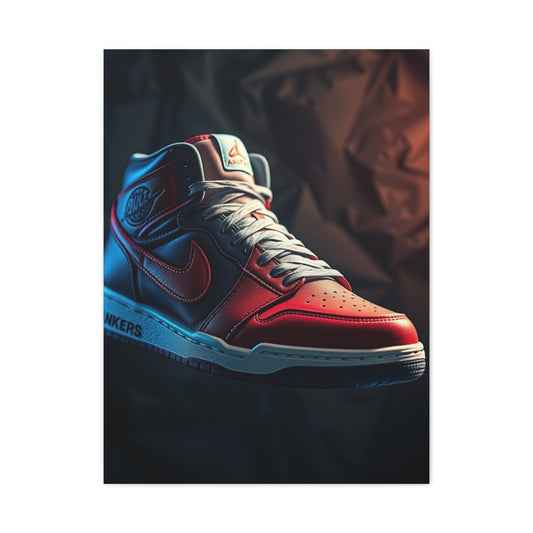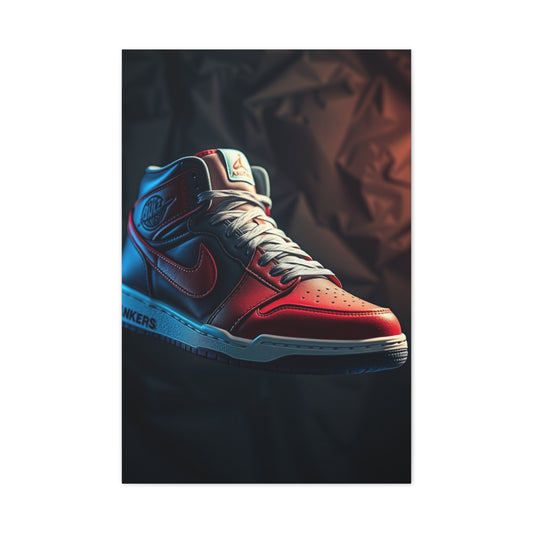While white walls have been the go-to choice for many years, it’s time to think beyond the traditional and explore a vibrant range of hues to personalize your space. In 2025, paint alternatives to white are becoming increasingly popular as they introduce warmth, character, and sophistication into your home. Whether you prefer subtle neutrals, calming tones, or bold statements, these six alternative colors will help you create the perfect ambiance for any room. From serene pastels to deep, dramatic shades, this guide provides inspiration for transforming your interiors and pairing your new wall color with complementary wall art.
Timeless Alternatives to White Walls
While white walls have been a staple in interior design for centuries, the evolving design landscape in 2025 opens up a wide range of exciting alternatives. Choosing the right paint color for your walls is about more than just aesthetics—it’s about creating a specific mood and atmosphere within your home. Whether you want a bright, uplifting space or a peaceful sanctuary, selecting a color that reflects the vibe you wish to cultivate is essential. In the coming year, a variety of colors are emerging as popular alternatives to stark white, offering flexibility in transforming your space without sacrificing the sense of openness that lighter colors provide.
The key to finding the perfect wall color alternative is first understanding the emotional impact of the hue. For those looking to add warmth, light shades with warm undertones are the way to go. These colors provide a sense of invitation and comfort, making them ideal for spaces such as living rooms, dining areas, and bedrooms. On the other hand, if a calm, serene retreat is what you're after, cool-toned colors such as soft blues, greens, and greys can work wonders in fostering a peaceful ambiance. These shades help create a relaxing environment perfect for winding down or meditation, whether in your home office, bedroom, or bathroom.
The best part about these timeless alternatives is that they don’t overwhelm the room; instead, they work harmoniously with various décor styles, whether you're aiming for a contemporary, modern, or classic look. Some trending alternatives for 2025 include blue-greens, taupes, and deeper tones, all of which bring depth and sophistication to your walls. For a touch of warmth and elegance, peach, true blue, and mauve continue to reign as go-to choices. These hues are not only timeless but versatile, offering a sophisticated, yet inviting atmosphere for any room in your home.
Exploring Blue-Greens: A Refreshing Escape
Blue-green hues, often referred to as teal, seafoam, or turquoise, have emerged as one of the most popular alternatives to white walls in recent years. These shades evoke a sense of calm, drawing inspiration from the natural world—think of lush forests, the ocean, and clear skies. The beauty of blue-greens lies in their versatility, allowing them to seamlessly blend into a variety of home design styles, from modern coastal to boho chic.
Blue-green works particularly well in spaces where relaxation and tranquility are key. For instance, in bedrooms, these colors can transform the space into a restful retreat. Whether you choose a soft pastel teal or a richer turquoise, these colors are perfect for creating a serene environment. Paired with natural elements like wood, wicker, or stone, blue-green walls bring nature into your home, creating an environment that feels both fresh and restorative.
In addition to their calming qualities, blue-greens are ideal for pairing with both cool and warm tones in your décor. Consider adding accents of coral, yellow, or deep gold for a complementary, vibrant look, or pair blue-greens with neutral tones like gray and white to maintain a minimalist aesthetic.
Taupe: Sophisticated Neutral Elegance
Taupe, a warm, earthy neutral, is a timeless alternative to white that offers sophistication without the sterility often associated with stark shades. Taupe walls exude a quiet elegance, offering a balanced, inviting environment. Unlike beige or tan, taupe leans toward a deeper gray-brown tone, making it a versatile choice for both contemporary and traditional spaces. Its warm undertones make it an excellent foundation for any room, adding depth while still maintaining an airy feel.
Taupe works beautifully in living rooms, dining areas, and kitchens, where it can enhance the warmth of natural wood furniture and rustic decor. It’s also a fantastic color for creating a calming, serene bedroom. When paired with cool-toned wall art or contemporary metal accents, taupe transforms into a modern, sophisticated color that elevates any space. For those seeking a minimalist aesthetic, taupe can serve as the perfect neutral backdrop for more vivid accent colors, creating a perfect balance between boldness and subtlety.
Peach: Inviting, Warm, and Playful
Peach is a color that brings warmth and character to your space, making it an excellent alternative to white, especially in rooms where you want to create an inviting and cheerful atmosphere. Peach, a harmonious blend of pink and orange, is both energetic and soothing, offering a gentle pop of color without being overwhelming. This light, bright hue has a subtle vintage appeal, making it an excellent choice for modern and eclectic interior designs.
In living rooms and dining areas, peach adds warmth and sophistication, complementing natural textures like wood and linen. It pairs beautifully with modern gray details, creating a balanced contrast between warm and cool tones. A vibrant peach accent wall can instantly energize a room, infusing it with a summery charm that lasts all year long. Peach’s versatility makes it perfect for accent walls or smaller spaces, adding personality without overwhelming the room.
Peach also pairs wonderfully with soft green tones or neutral accents, enhancing its inviting and refreshing qualities. When combined with contemporary or abstract wall art in complementary hues, it creates a space that feels stylish and full of life.
Mauve: Elegant and Timeless
Mauve, a soft blend of purple and pink, is a color that exudes sophistication and romance. Often considered an alternative to beige or taupe, mauve brings an elegant, timeless quality to any room. Its gentle, muted tone creates a sense of luxury without being too bold or overpowering, making it perfect for spaces where you want to cultivate both calmness and refinement.
Mauve works beautifully in bedrooms and living rooms, where it can create an intimate, cozy ambiance. Its subtle undertones allow it to pair seamlessly with other muted shades like dusty rose, gray, or soft taupe, while its depth makes it a perfect complement to metallic accents and darker furnishings. Mauve is particularly stunning when paired with luxurious fabrics such as velvet, silk, or satin, adding a touch of opulence to the room. Whether you're aiming for a traditional or modern look, mauve can serve as the perfect canvas for your design ideas.
Gray: A Versatile, Contemporary Alternative
Gray is a universally loved neutral, offering endless possibilities when it comes to creating sophisticated and modern interiors. It has become a popular alternative to white due to its versatility and timeless appeal. From light dove gray to deeper charcoal, this color offers a wide range of shades that can complement various furniture styles, materials, and color schemes.
For those seeking a more daring approach, dark gray or charcoal walls can create a dramatic, high-end look while maintaining a contemporary vibe. These darker tones are perfect for making bold statements in living rooms, kitchens, or even bathrooms. Paired with sleek, modern furniture and vivid wall art, dark gray walls create a chic, stylish atmosphere that feels both refined and cozy.
Lighter shades of gray provide a softer, more neutral backdrop, making them ideal for smaller rooms or spaces where you want to create a calm, open environment. Light gray walls allow you to incorporate more vibrant colors into your décor, from bright artworks to colorful textiles, without overwhelming the space.
Black: Bold, Dramatic, and Luxurious
For those who are ready to make a bold statement, black is the ultimate choice. While it may seem intimidating, black walls can add a level of sophistication, luxury, and drama to any room. This year, designers are embracing dark, moody colors in both large and small spaces. Black provides the perfect contrast for your furniture and artwork, allowing these elements to truly pop.
Black walls work especially well in rooms with luxurious materials such as marble, metal, or leather. The bold, edgy backdrop makes these high-end finishes stand out, creating a sense of opulence and modernity. When paired with minimalist décor, black walls exude an artistic, contemporary feel that enhances the overall ambiance of the room.
For those hesitant to go all in with black, consider using it as an accent wall in your living room, hallway, or dining area. Black can also be used in smaller spaces, like bathrooms or home offices, to create a stylish, bold atmosphere. The contrast between the dark walls and light furnishings or artwork brings a touch of creativity and elegance to the space.
Transform Your Space with the Perfect Paint Color
Choosing the right alternative to white walls can completely transform the look and feel of your home. Whether you opt for a soothing sage green, a warm peach, or a sophisticated gray, each of these shades offers something unique to your interior design. Paint colors are not just about aesthetics—they set the tone for your entire space, creating an environment that reflects your style and enhances your mood.
Switching to a new wall color is an easy way to breathe new life into your home. From creating a calm retreat to adding dramatic flair, these paint colors allow you to personalize your space and experiment with new styles. And with the right wall art, you can complement these colors, creating a cohesive and beautifully balanced atmosphere throughout your home.
Sage Green: A Cool and Calming Choice for Your Home
Sage green is a soft, serene hue that has become a favorite in contemporary interior design. Its versatility, subtlety, and connection to nature make it the perfect choice for creating a tranquil and rejuvenating environment in your home. This cool-toned green, with a hint of blue, has an inherently calming effect, which is why it’s so often chosen for spaces designed for relaxation and restoration. Whether you’re looking to transform your bedroom into a peaceful retreat or soften the ambiance of your living room, sage green offers a soothing backdrop that harmonizes with a variety of décor styles.
Sage green's ability to blend seamlessly with other colors and materials makes it a highly adaptable choice for any room. Unlike bolder shades of green, sage has a muted, soft quality that doesn't overpower the senses. It provides a refreshing, organic touch while remaining subtle enough to complement both traditional and modern design elements. Sage green serves as a neutral tone that can support more vibrant colors or act as the main shade in your space, offering balance and calm.
Transform Your Bedroom with Sage Green Walls
For bedrooms, sage green is an ideal choice for creating a peaceful, serene space. The soothing qualities of this color can promote relaxation and restful sleep, making it the perfect choice for a room dedicated to unwinding after a long day. The color evokes the calmness of nature and invites tranquility, helping to create an environment where you can recharge both mentally and physically.
When choosing sage green for your bedroom walls, consider pairing it with natural materials to enhance the room’s calming atmosphere. Opt for linens made from organic cotton, soft velvet cushions, or cozy wool throws in complementary neutral tones. The textural contrast between the smoothness of sage walls and the plushness of natural textiles will add depth and warmth to the space. Incorporating warm wood furniture or accents can further amplify the earthy feel of the room, allowing the sage green to harmonize with the natural surroundings.
The calming nature of sage green also allows for flexibility in pairing it with other colors. Whether you prefer muted tones such as soft whites, beige, or light gray, or you want to add a pop of color with accents in soft pinks or dusty blues, sage is a color that complements a wide range of palettes. This versatility allows you to create a bedroom that’s both stylish and restful, making it the perfect space to relax and recharge.
Sage Green in Living Rooms: Adding Calm Without Sacrificing Style
Sage green is equally effective in living rooms, where it brings a relaxed vibe without making the space feel overly casual. For living rooms that need to balance style and comfort, sage green provides the perfect foundation. This color softens the lines of bold furniture choices, making the room feel more approachable and warm, while still maintaining a chic and contemporary look. Sage green works particularly well with neutral-colored sofas or colorful accent pieces, allowing you to create a sophisticated space that feels both welcoming and stylish.
Pairing sage green walls with a mix of modern furniture and vintage décor adds depth to the room while keeping the space feeling fresh. Whether you choose sleek metal, plush velvet, or earthy wood for your furniture, sage provides a neutral backdrop that allows these materials to shine. You can also experiment with textured fabrics such as linen or tweed for a more organic, inviting look that complements the peaceful energy of the room.
Sage green's versatility shines through in how it can work with various design styles. If you have a more traditional or rustic style, sage green pairs beautifully with antique furniture and traditional patterns. For a more modern look, pair it with minimalistic furniture and simple, clean lines to create a sleek and calm environment. Sage can also be enhanced with metallic accents, such as gold or brass, which add a touch of luxury without overpowering the calming vibe of the room.
To complete your living room design, consider pairing sage green with wall art that features natural elements. Botanical prints, abstract art in muted tones, or nature-inspired photographs can complement the color and enhance the tranquil atmosphere.
Sage Green in Kitchens and Dining Areas
Sage green is a versatile color that works well in both kitchens and dining areas, offering a subtle yet refreshing change from the typical white or beige walls. In the kitchen, sage green walls can create an inviting, cozy atmosphere, perfect for cooking and entertaining. It pairs beautifully with white or wooden cabinetry, adding a touch of sophistication while still feeling light and airy.
For a more contemporary kitchen, sage green can work wonders when paired with sleek countertops and modern fixtures. For a rustic or farmhouse-inspired kitchen, sage green provides an earthy backdrop that complements wooden countertops, vintage kitchenware, and patterned textiles. The color is also ideal for incorporating into smaller spaces like dining nooks, where it can make the room feel cozy and intimate.
Sage green works particularly well with natural materials like stone, marble, and wood. Pair it with marble countertops or a wooden dining table to create a harmonious blend of natural elements. The color also brings out the beauty of fresh plants and herbs, which are perfect for placing on countertops or windowsills.
To complete your kitchen or dining area, pair sage green with botanical-themed wall art. A vintage botanical print or a modern line drawing of plants complements the natural vibe of the color and adds a refreshing, organic touch to the room.
Sage Green in Bathrooms: A Spa-Like Retreat
Sage green is a popular choice for bathrooms, as it creates a spa-like atmosphere that promotes relaxation and rejuvenation. The calming, cool tones of sage green evoke the feeling of a tranquil retreat, perfect for unwinding after a long day. Whether you’re looking to redesign your entire bathroom or simply update the walls, sage green is a great way to infuse the space with soothing energy.
In a small bathroom, sage green can make the space feel larger and more open. Pair it with white or gray accents to create a clean, airy look. In larger bathrooms, sage green can be combined with natural stone tiles, wooden accents, and soft textiles for a luxurious, spa-inspired feel. Add lush greenery or a few decorative plants to further enhance the connection to nature, and consider using soft, natural materials like cotton towels and bamboo accessories.
The serene nature of sage green in bathrooms helps to create a peaceful environment where you can relax and unwind. Consider pairing it with soft lighting and calming wall art to complete the spa-like atmosphere.
Pairing Sage Green with Nature-Inspired Wall Art
When choosing wall art to complement sage green, nature-inspired pieces work best to enhance the earthy qualities of the color. Botanical prints, floral artworks, and abstract representations of nature can help tie the room together and promote the tranquil atmosphere that sage green brings. Wall art featuring greenery, trees, or natural landscapes will create a cohesive and harmonious design, further connecting your home to the beauty of the outdoors.
Whether you’re decorating your bedroom, living room, or bathroom, sage green provides the perfect foundation for creating a peaceful, nature-inspired space. Its subtle elegance and calming effect make it an ideal choice for any room where you want to promote relaxation, comfort, and a sense of serenity.
Beige: Warmth and Timeless Appeal in Your Home Décor
Beige has long been a go-to neutral shade in interior design, and its enduring popularity shows no signs of waning. Unlike stark white, which can sometimes feel cold or sterile, beige offers a soft and inviting warmth that transforms a room into a comfortable, welcoming space. From light, vanilla-beige hues to deeper sandy browns, this timeless color serves as an excellent backdrop that doesn’t overwhelm the room but instead enhances its overall design. Beige works effortlessly with various other colors, making it a versatile choice for homeowners looking to create spaces that feel both balanced and cozy.
The beauty of beige lies in its ability to adapt to different styles and functions within a room. It can be used in a contemporary living room or a cozy traditional bedroom, as well as in kitchens and entryways, where it sets a neutral yet refined tone. Beige’s understated elegance provides a calming effect, allowing furniture, artwork, and accent pieces to shine without competing for attention. By acting as a subtle canvas, beige sets the stage for other design elements to take center stage, making it the ideal neutral shade for a wide range of décor styles.
Versatility in Living Rooms and Common Spaces
In living rooms and common areas, beige creates an inviting atmosphere, offering warmth without feeling overpowering. It serves as an ideal backdrop for a variety of furniture pieces, allowing the textures, colors, and styles of your décor to stand out. Beige’s versatility means it can support a range of design elements—from bold, colorful furniture to more muted, natural tones. When paired with natural wood accents, like a reclaimed wood coffee table or a wooden bookshelf, beige walls complement the rustic charm while maintaining an air of sophistication.
Beige also works particularly well in spaces where you want to maintain a light and airy feel, especially when paired with light-colored furniture or soft, neutral-toned fabrics. Soft beige tones can create a relaxing environment, making living rooms feel larger and more open. Whether you are decorating a contemporary apartment or a classic home, beige ensures that the space feels welcoming and stylish.
The color is particularly beneficial in smaller spaces where a sense of openness is essential. Beige can reflect light, making the room feel brighter and more spacious. This is why beige is often used in entryways, hallways, and other transition areas that connect rooms together. Its ability to make spaces feel connected yet distinct is a key feature in maintaining the flow of a home’s design.
Elevating Kitchens and Dining Areas with Beige
Beige is equally effective in kitchens and dining rooms, where it creates a warm, inviting space perfect for gathering and entertaining. In kitchens, beige provides a neutral backdrop that complements various design elements, including cabinetry, countertops, and appliances. Whether your kitchen features sleek, modern finishes or a more rustic, farmhouse style, beige can create a cohesive, grounded look that is both functional and aesthetically pleasing.
Beige pairs beautifully with natural wood cabinetry and stone countertops, creating a seamless connection between the indoors and nature. This soft, neutral shade also works well with metallic accents like brass or stainless steel, which add a touch of elegance without overshadowing the overall warmth of the space. In dining areas, beige provides a sophisticated backdrop for dining tables, chairs, and lighting fixtures, allowing the room’s furnishings to stand out while maintaining an open, airy atmosphere.
When it comes to accent colors, beige complements a wide range of hues, from vibrant jewel tones to soft pastels. Consider incorporating bold artwork or colorful textiles in your dining area to contrast with the beige walls. This dynamic combination brings life to the space while keeping it balanced and harmonious.
Creating a Cozy Sanctuary in Bedrooms
Beige is also a perfect choice for bedrooms, offering a serene, tranquil foundation for a restful night’s sleep. The soft warmth of beige creates a cozy, inviting atmosphere, making it the perfect backdrop for plush bedding, cozy textiles, and restful furniture pieces. In bedrooms, beige allows you to play with a variety of accent colors and textures, making it easy to create a personalized, comfortable space that suits your individual style.
Pair beige walls with soft bedding in natural materials like linen or cotton to enhance the room’s calming effect. Beige also pairs beautifully with other neutral tones like gray, white, or taupe, which create a sophisticated, layered look. For a more dramatic effect, consider adding rich accent colors such as deep navy, emerald green, or soft blush pink in your throw pillows, rugs, or wall art.
The beauty of beige in bedrooms is its ability to complement various décor styles. Whether you prefer a modern minimalist look, a coastal retreat, or a more traditional design, beige offers a versatile base that works with any aesthetic. With its neutral undertones, beige is ideal for creating a calm, restful environment where you can unwind and rejuvenate.
Natural Accents and Wall Art: The Perfect Pairing
One of the most effective ways to elevate the beauty of beige walls is by pairing them with complementary wall art. Because beige is such a versatile color, it allows you to experiment with a wide range of styles, from bold, colorful art to more subdued, nature-inspired pieces. For example, nature-themed wall art featuring botanical illustrations, abstract landscapes, or soft watercolor paintings can enhance the earthy qualities of beige, creating a space that feels connected to the natural world.
For a more modern, sleek look, try pairing beige walls with minimalist line art or geometric prints in muted tones. The simplicity of the art combined with the warmth of the beige walls creates a balanced, refined atmosphere that is both stylish and calming. Alternatively, consider incorporating metallic or textured wall art to add visual interest and a touch of sophistication to the room.
By using wall art to complement beige walls, you can create a focal point in the room that adds depth and personality while maintaining the serene and elegant feel of the space. Whether you opt for vibrant, colorful pieces or subtle, monochromatic designs, wall art provides the perfect opportunity to enhance the room’s aesthetic and express your unique style.
Beige’s Timeless Appeal and Flexibility
Beige’s timeless appeal lies in its ability to remain relevant across a variety of styles and trends. Its versatility makes it the perfect choice for homeowners who want a neutral backdrop that supports various design elements while creating a warm, inviting environment. Whether you’re designing a contemporary apartment, a classic home, or a cozy retreat, beige provides the flexibility to create a cohesive, stylish look that enhances your home’s overall aesthetic.
One of the reasons beige remains such a popular choice is its ability to pair well with virtually every color and material. From natural wood accents to metallic finishes, beige provides a soft, warm base that works with a wide range of furniture, textiles, and décor pieces. It’s a color that complements your existing style, whether you prefer a more traditional look or a sleek, modern design.
For those looking to create a serene, balanced space, beige offers a subtle yet powerful presence that enhances your home’s atmosphere without overwhelming it. Its calming qualities make it the perfect choice for living rooms, kitchens, bedrooms, and even bathrooms, where it can create a soothing environment that promotes relaxation and comfort.
Baby Blue: Light, Breezy, and Effortlessly Chic
Baby blue is a timeless, soft color that adds a refreshing, airy vibe to any space. Slightly retro but still contemporary, baby blue works wonderfully in kitchens, bedrooms, and bathrooms. This cheerful hue has a light and breezy quality that evokes the feeling of a summer day, making it perfect for rooms where relaxation and tranquility are key.
The versatility of baby blue allows it to complement a variety of décor styles, from vintage to modern. It pairs beautifully with both cool and warm tones, making it easy to integrate into spaces with existing furniture. Baby blue walls in a kitchen, for example, offer a light, refreshing backdrop for cabinets or countertops, while in the bedroom, it creates a calm, peaceful environment for sleep.
To keep the space feeling fresh, pair baby blue with soft white or light wood accents. For a more personalized touch, incorporate wall art with warm and cool tones, creating a harmonious balance between the soft color of the walls and the décor elements in the room.
Peach: Soft, Inviting, and Full of Character
Peach is a warm, inviting color that offers the perfect balance between softness and vibrancy. This hue, not quite orange and not quite pink, brings an effortless charm and energy to any room. Peach is ideal for accent walls or smaller spaces where you want to add warmth without overpowering the room. It adds a cheerful pop to your home, evoking a sense of summer and joy year-round.
Peach pairs wonderfully with both modern gray and neutral tones, making it a great choice for contemporary designs. It brings a refreshing brightness to spaces without being overly bold or saturated. A vibrant peach accent wall in the living room or hallway can instantly transform the space, making it feel warm and welcoming.
Pair peach walls with modern gray details in furniture or textiles to create a balanced, harmonious contrast. Peach works especially well in spaces where you want to evoke a joyful, energetic mood, such as dining rooms, living areas, or even kitchens.
Modern Gray: Sophistication and Versatility
Gray continues to be a popular choice for homeowners looking for a sophisticated alternative to white. Whether you choose a light dove gray or a deeper charcoal, this versatile shade complements virtually every style. Gray works particularly well in modern, contemporary spaces, providing a neutral backdrop that allows other design elements to shine.
Darker shades of gray create a bold and dramatic statement in rooms like living rooms, kitchens, and bathrooms. When paired with vibrant wall art or colorful accessories, dark gray walls provide the perfect backdrop to enhance those accents, creating a chic and polished atmosphere.
For those seeking a more subdued look, light gray provides a subtle, airy feel that can open up a space while still maintaining a modern aesthetic. Gray works beautifully with wooden textures, metallic finishes, and a range of colorful artworks, allowing you to experiment with different design elements without overwhelming the room.
Bold Black: A Luxurious and Dramatic Statement
If you're seeking something more daring, black is the ultimate choice for creating a striking and luxurious atmosphere. While black walls may seem intimidating, they add an unparalleled level of sophistication and drama to any space. Black serves as the perfect backdrop for showcasing artwork and furniture, allowing both to shine in contrast.
Incorporating black walls into a modern living room or dining area provides a bold yet refined setting. The deep, dark tone makes any piece of furniture or décor pop, turning the space into a visually stunning environment. When paired with minimalist line art or bold, colorful décor, black walls create a sophisticated and luxurious vibe that elevates the entire room.
Black works well with high-end materials such as marble, leather, and gold accents, making it a perfect addition to luxury interiors. Whether you use black as an accent in a hallway or go all-in in the living room, it’s a timeless color that exudes elegance and boldness.
Transform Your Space with a Fresh Coat of Paint
White walls have long been the default choice in home design, offering a clean and neutral backdrop. But while white is classic, it’s not your only option—and it’s certainly not always the most exciting. If your space feels a little bland or sterile, a simple switch in wall color can do wonders. A fresh coat of paint is one of the easiest, most cost-effective ways to update your home, and the right shade can instantly change the entire vibe of a room.
Why Ditch the White?
White walls are safe, but they can also feel cold or unfinished if not styled thoughtfully. Choosing a different color allows you to inject personality, warmth, and emotion into your environment. The right paint color sets the tone—literally and figuratively—for how the space is experienced. Whether you're after cozy and comforting, energizing and creative, or sleek and dramatic, there’s a color that can help you achieve that.
Sage Green: Calm and Connected
Sage green has become a favorite in recent years, and for good reason. It’s soft, soothing, and deeply connected to nature. This shade brings in an earthy, grounded feel that works beautifully in bedrooms, kitchens, or living rooms. It pairs well with natural materials like wood, rattan, and linen. Whether used as an accent wall or throughout the room, sage green creates a sense of peace without feeling boring.
Peach and Terracotta: Warm and Welcoming
If you're looking to make your home feel more inviting, warm tones like peach, terracotta, or muted coral can add a soft glow to your space. These hues give off a sun-drenched, Mediterranean feel that makes any room feel instantly more welcoming. They’re especially effective in dining rooms and hallways—spaces where you want to encourage gathering and conversation. Plus, they look incredible when paired with brass fixtures, woven textures, or vintage-inspired decor.
Navy and Deep Blues: Timeless and Moody
For those who want sophistication with a hint of drama, navy and deep blue walls are a bold yet timeless choice. They offer depth and elegance without overwhelming a room. These colors work well in both traditional and modern interiors, and they create a stunning contrast when paired with crisp whites, light woods, or metallic accents. Ideal for home offices or formal dining rooms, navy adds seriousness with style.
Charcoal and Black: Bold and Refined
Yes, black walls can work—and they can look amazing. A matte charcoal or soft black can actually make a space feel more intimate and intentional. Used in the right way, dark colors can highlight architectural features, frame artwork beautifully, and create a cozy cocoon effect. Just balance the darkness with proper lighting and lighter furnishings to keep the space from feeling closed in.
Soft Neutrals: The New White
If you’re not quite ready to go bold but want more warmth than stark white, consider soft neutrals like greige (grey-beige), warm taupe, or creamy off-whites. These shades maintain versatility while adding subtle depth. They’re easy to live with and serve as a sophisticated backdrop for just about any style of décor—from boho to minimal to modern farmhouse.
Final Thought:
Switching from traditional white walls to any of these stunning alternatives can completely transform the look and feel of your space. Whether you choose a soft, calming sage green, a warm, inviting peach, or a dramatic black, these paint colors will elevate your home’s ambiance. The key is to select a color that reflects your personal style and the mood you want to create. Each of these shades can serve as a foundation for your décor, providing a perfect backdrop for furniture, accessories, and wall art.
By embracing these alternatives to white, you can create a room that reflects your aesthetic while adding warmth, character, and depth. Whether you opt for a soft, tranquil retreat or a bold, modern statement, the right paint color will set the tone for your entire home.



























